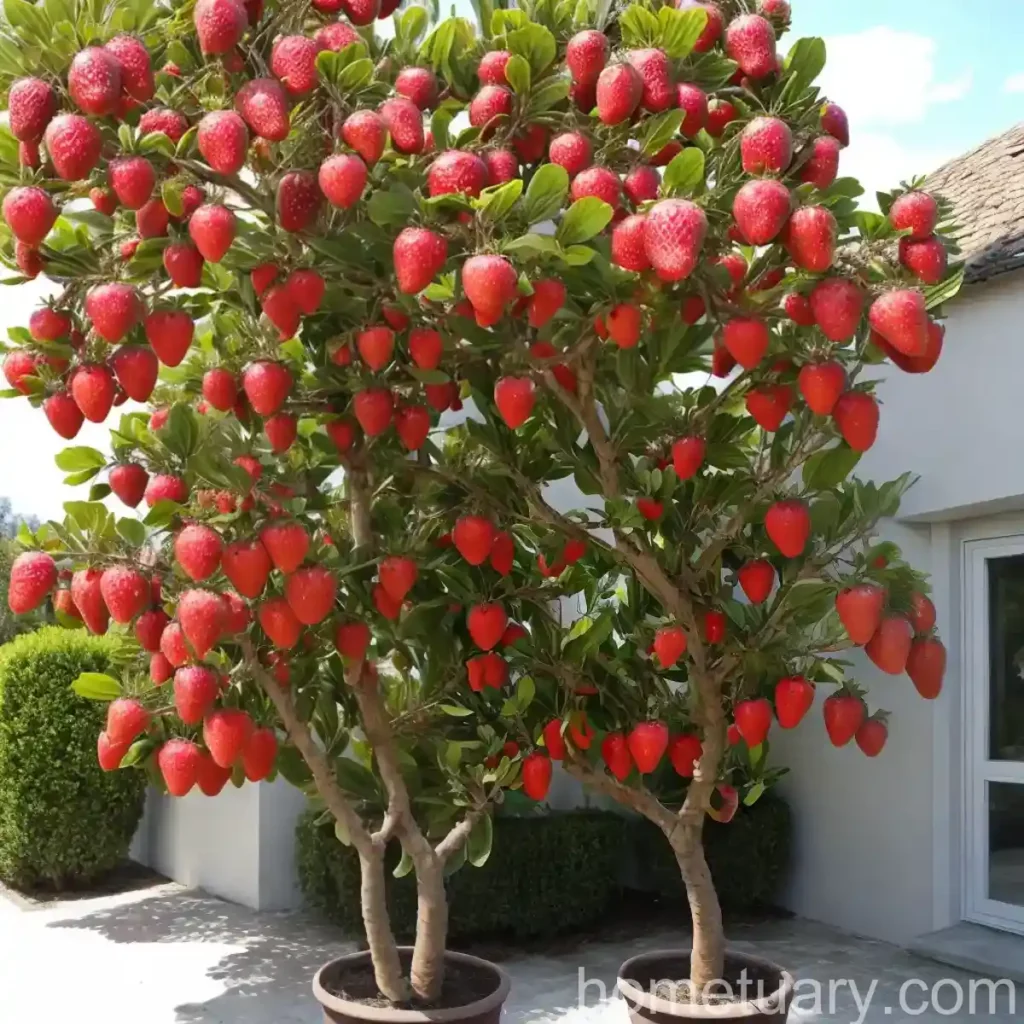Strawberry Tree (Arbutus unedo)
The strawberry tree, scientifically known as Arbutus unedo, is a fascinating plant species that is cherished for its ornamental value, ecological significance, and edible fruits. In this comprehensive guide, we will delve into the intricacies of this unique tree, uncovering its cultural significance, uses, care requirements, and much more. By the end of this article, you will have a profound understanding of the strawberry tree and how to cultivate and appreciate it to its fullest potential.
Key Takeaways – Strawberry Tree (Arbutus unedo)
Before we embark on our journey to understand the strawberry tree in depth, let’s summarize some key takeaways about this captivating plant:
- Scientific Name: Arbutus unedo
- Common Name: Strawberry Tree
- Cultural Significance: In folklore and mythology, the strawberry tree holds symbolic and historical importance.
- Ecological Role: It serves as a valuable wildlife habitat and nectar source.
- Edible Fruit: The tree produces small, strawberry-like fruits that are edible and often used in traditional practices.
- Ornamental Value: With evergreen foliage and beautiful, urn-shaped flowers, it is an attractive addition to gardens and landscapes.
- Disease Resistance: While generally hardy, the tree can be susceptible to certain pests and diseases, requiring attentive care.
Now, let’s embark on a comprehensive exploration of the strawberry tree, covering various aspects including its culture, uses, care requirements, common diseases, and much more.
What is the Strawberry Tree (Arbutus unedo)?
The strawberry tree, or Arbutus unedo, is a species of evergreen shrub or small tree that belongs to the Ericaceae family. This plant is native to the Mediterranean region, particularly in countries such as Portugal, Spain, and southern Ireland. It is known for its distinct foliage, ornamental flowers, and unique fruits.
The strawberry tree is recognized for its ecological importance; it provides shelter and food for various forms of wildlife. Furthermore, its fruits possess culinary significance and are utilized in traditional practices and regional cuisines.
Plant Characteristics
Some distinctive features of Arbutus unedo include:
- Foliage: The tree exhibits dark green, leathery leaves that maintain their color throughout the year.
- Flowers: Its flowers are urn-shaped, creamy white, and possess a delicate, honey-like fragrance.
- Fruits: The tree produces small, round fruits that resemble strawberries in appearance, hence contributing to its common name, “strawberry tree.”
Now that we have familiarized ourselves with the basic attributes of the strawberry tree, let’s delve deeper into various aspects of this plant.
Culture
Understanding the cultural requirements of the strawberry tree is fundamental to ensuring its optimal growth and well-being. From water and sunlight preferences to soil considerations and optimal fertilization, a thorough comprehension of these cultural aspects is essential for successful cultivation.
Water
The water requirements of Arbutus unedo are relatively moderate once established, and the plant demonstrates good tolerance to drought conditions. However, during its establishment phase, it benefits from regular watering to promote healthy root development. It is important to ensure that the soil is well-drained, as the tree is susceptible to root rot in waterlogged conditions.
Sunlight
Being a native of the Mediterranean region, the strawberry tree thrives in full sunlight. It is best suited to locations with ample sunshine, allowing it to photosynthesize efficiently and develop its characteristic foliage and fruits.
Fertilizer
When it comes to fertilization, the strawberry tree does not demand excessive feeding. A balanced, slow-release fertilizer applied in spring can support its growth and overall vitality. It is advisable to avoid excessive nitrogen, as it can lead to lush foliage growth at the expense of fruit development.
Soil
Arbutus unedo prefers well-drained, slightly acidic to neutral soils. It is crucial to avoid waterlogged or overly compacted soils, as these conditions can lead to root suffocation and disease susceptibility. Amending the soil with organic matter can enhance its structure and fertility, promoting a favorable environment for the plant’s roots.
Sunlight
The Strawberry Tree – Arbutus unedo, thrives in full sun to partial shade. It is essential to note that the more sunlight the strawberry tree receives, the more abundant its flowering and fruiting will be. When planted in partial shade, it may still flower and fruit, but to a lesser extent than when grown in full sun.
Fertilizer
While the Strawberry Tree is relatively low-maintenance, it benefits from a balanced fertilizer application in the spring. Choose a slow-release fertilizer that provides a steady supply of nutrients without the risk of over-fertilization. It’s important to avoid excessive nitrogen, as it can promote excessive foliage growth at the expense of fruit production.
Soil
The Strawberry Tree prefers well-drained, slightly acidic to neutral soil. It’s important to ensure that the soil is not waterlogged, as this can lead to root rot and other issues. Amending the soil with organic matter can help improve its structure and fertility, providing an optimal growing medium for the strawberry tree.
Pruning
Proper pruning is essential for the health and aesthetics of the strawberry tree. It is advisable to carry out pruning during the dormant season to shape the tree, remove damaged or diseased branches, and encourage an open and balanced canopy. Regular pruning also promotes air circulation and sunlight penetration, reducing the likelihood of disease and pest issues.
Propagation
The propagation of Arbutus unedo can be carried out through several methods, including:
- Seeds: Collect ripe fruits, extract the seeds, and sow them in a suitable growing medium.
- Cuttings: Stem cuttings can be taken during the growing season and rooted in a moist, well-draining medium under controlled conditions.
- Layering: Encourage the growth of roots on a low-hanging branch by covering it with soil or a growing medium until it forms an independent plant.
Each method has its own challenges and advantages, and the choice of propagation technique depends on the resources and expertise available.
Container Popularity
The strawberry tree’s ornamental value, manageable size, and relatively low maintenance needs contribute to its popularity as a container plant. It can thrive in a large container on a patio, balcony, or terrace, offering its distinctive foliage, flowers, and fruits in a confined space. When grown in pots, it is essential to ensure adequate drainage and regular monitoring of its moisture needs.
Container Common Diseases
While the strawberry tree is generally robust, growing it in a container can present specific challenges, including the potential for diseases such as root rot and leaf spot. Vigilant monitoring, appropriate watering practices, and suitable soil media are essential to prevent disease development in container-grown specimens.
Disease Diagnosis
Familiarizing yourself with common diseases that afflict the strawberry tree is crucial for its management and preservation. Some prevalent diseases that can affect Arbutus unedo include:
- Phytophthora Root Rot: This fungal disease can lead to the decay of the tree’s roots, causing wilting, browning of foliage, and eventual death.
- Leaf Spot: Caused by various fungi, this disease manifests as dark spots and lesions on the foliage, potentially leading to defoliation and reduced vigor.
Early diagnosis and swift intervention are essential to mitigate the impact of these diseases and preserve the health of the strawberry tree.
Common Pests
Understanding the potential pests that can infest the strawberry tree is instrumental in implementing effective pest management strategies. Some common pests that may target Arbutus unedo include:
- Spider Mites: These tiny arachnids can cause stippling and discoloration of foliage, leading to reduced photosynthetic efficiency.
- Scale Insects: These immobile pests can infest branches and leaves, feeding on the tree’s sap and potentially causing weakening and deformities.
Regular monitoring and prompt intervention can help prevent pest infestations from escalating and causing significant damage to the tree.
Botanist’s Tips
For enthusiasts and professional botanists alike, maximizing the growth and vitality of the strawberry tree can be an exciting endeavor. Here are some valuable tips to optimize the care and cultivation of Arbutus unedo:
- Prune Wisely: Regular pruning is crucial for shaping the tree, removing dead or diseased branches, and enhancing overall vigor. Exercise caution to avoid excessive pruning that can compromise the tree’s health.
- Monitor Moisture Levels: While the tree is tolerant of drought conditions, it is essential to ensure consistent moisture, particularly during its establishment phase and in containers.
- Maintain Well-Drained Soil: The strawberry tree is susceptible to root issues in waterlogged soils. Ensuring proper drainage and soil structure is fundamental for its health and longevity.
Implementing these tips can contribute to the successful growth and preservation of the strawberry tree, enriching landscapes and habitats with its unique attributes.
Fun Facts
To further appreciate the strawberry tree and its cultural, ecological, and botanical significance, consider the following intriguing fun facts:
- Folklore and Mythology: In various cultures, the strawberry tree holds symbolic and mythological importance, often associated with love, rebirth, and resilience.
- Medicinal Uses: Traditionally, the fruits and leaves of the strawberry tree have been utilized for their purported medicinal properties, including their astringent and diuretic effects.
- Wildlife Attraction: The tree serves as a valuable habitat and food source for birds, bees, and other forms of wildlife, contributing to the biodiversity of its surroundings.
Now that we have explored the cultural, ecological, and botanical aspects of the strawberry tree, let’s turn our attention to additional resources and references for further information and guidance.
Links to External Resources
For a more in-depth understanding of Arbutus unedo and its various facets, refer to the following external resources:
- Botanical Society of Britain & Ireland: Arbutus unedo Information
- Royal Horticultural Society: Strawberry Tree Growing Guide
- University of Florida IFAS Extension: Strawberry Tree for the Landscape
- American Society for the Prevention of Cruelty to Animals: Toxic and Non-Toxic Plant List – Strawberry Tree
By exploring these resources, enthusiasts, horticulturists, and botanists can gain valuable insights to enrich their knowledge and appreciation of the strawberry tree. Whether it’s understanding its ecological role, cultural significance, or practical care guidelines, these resources offer a wealth of information for all interested individuals.
In conclusion, the strawberry tree, Arbutus unedo, stands as a remarkable species that intertwines ecological importance, ornamental beauty, and cultural significance. From its evergreen foliage and honey-scented flowers to its prized fruits and folklore connections, this plant offers a tapestry of attributes that captivate enthusiasts and environmental advocates alike. By embracing its cultivation and conservation, we can honor and cherish the timeless allure of the strawberry tree.
The intricate nature of the Arbutus unedo, commonly known as the strawberry tree, offers a captivating blend of cultural symbolism, ecological value, and botanical allure. Throughout this extensive guide, we have delved into the various facets of this remarkable plant, equipping readers with a profound understanding of its cultivation, uses, and significance. Whether you are a gardening enthusiast, a conservationist, or a botanical scholar, the strawberry tree’s enduring charm is sure to leave a lasting impression.
In this blog post, we have explored the cultural significance, uses, care requirements, common diseases, and much more. We have also provided a tailored approach to the plant care with specific instructions about water, sunlight, fertilizer, soil, tree pruning, and container popularity and many more. The resources are also recommended for further investigation into the magnificent attributes and nuances of the Arbutus unedo.
As a dedicated plant scientist, it is my fervent hope that this comprehensive guide has deepened your appreciation for the strawberry tree and inspired a sense of stewardship toward its preservation and propagation. Whether it graces a garden, woodland, or landscape, the Arbutus unedo stands as a testament to the intersection of nature’s splendor and human intrigue.
I hope you have enjoyed this extensive exploration of the strawberry tree and that it has provided valuable insights and guidance for your botanical pursuits and horticultural endeavors.
Happy gardening and discovery!
The Plant Scientist















